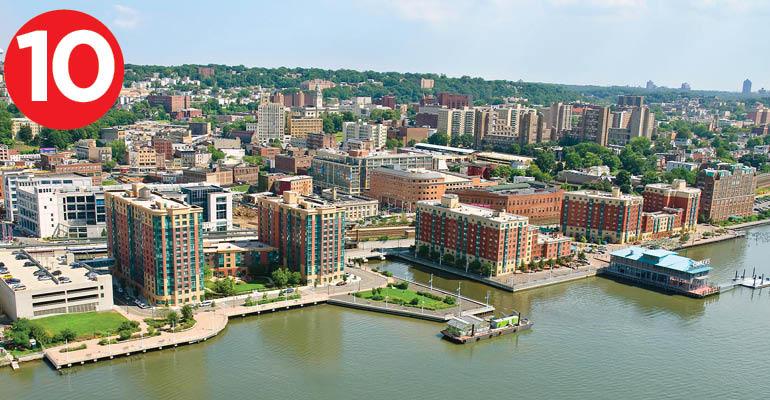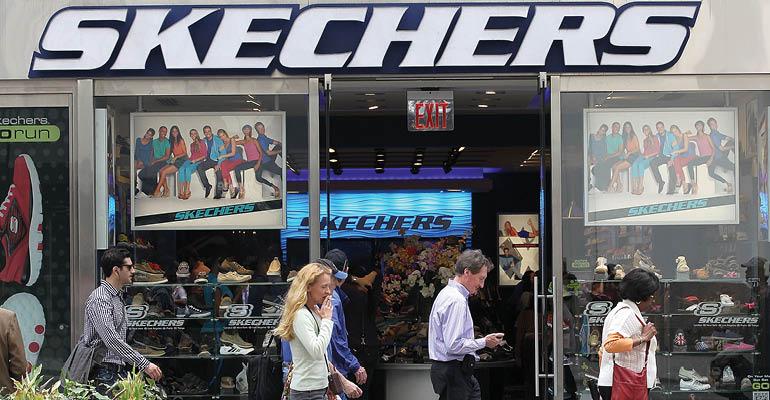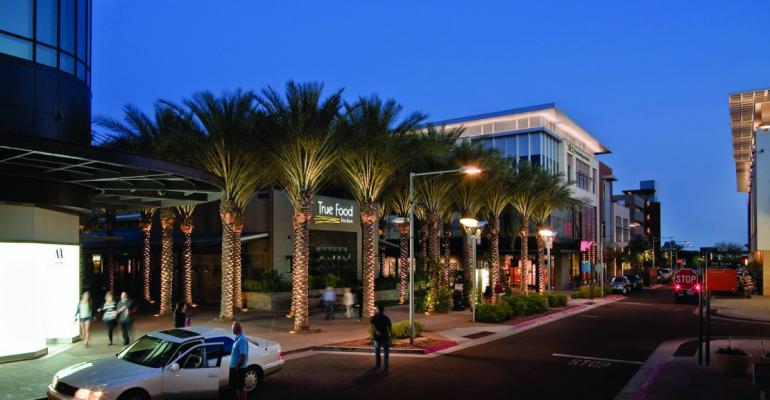Institutional investors are now competing for small, previously obsolete class-B, -C and -D industrial buildings in urban locations.
Every $1 billion in e-commerce sales requires 1.25 million sq. ft. of distribution space, said Scott Marshall, executive managing director of advisory and transaction services | investor leasing with CBRE, during a meeting of the Chicago chapter of NAIOP earlier this year. He noted that with e-commerce sales poised to grow by more than 10 percent year-over-year, to $491 billion in 2017, e-commerce companies will require an additional 50 to 60 million sq. ft. of warehouse distribution space this year alone.
The distribution space along the “last mile” to consumer makes up a big chunk of this need, according to Marshall. This has created a new niche for institutional investors who are now competing for small, previously obsolete class-B, -C and -D industrial buildings in urban locations and are snapping up whole portfolios in this asset class.
Among this group of investors is Canada-based Ivanhoe Cambridge, the real estate subsidiary of the Caisse de dépôt et placement du Québec, one of Canada’s leading institutional fund managers. The company recently announced the acquisition of a 16-million-sq.-ft. property portfolio from Boston-based Evergreen Industrial Properties. This portfolio consists of more than 150 light industrial facilities in strategic infill locations in high-growth U.S. markets, including Seattle, Denver and Charlotte, N.C., as well as major distribution markets Atlanta, Chicago and Dallas.
U.S. investment specialist DRA Advisors also recently acquired a portfolio of 184 small- and mid-sized warehouse, distribution and light industrial properties in infill markets across the nation from Cabot Properties for $1.6 billion.
According to research firm CoStar, investors covet class-B urban industrial facilities because these facilities are outperforming other industrial assets. With increasing e-commerce sales and customer demand for same-day and next-day delivery, rents at these types of properties rose 10.4 percent nationally in the fourth quarter of 2016 compared to a year earlier, while industrial rents overall rose just 6.4 percent.
Vacancy at distribution facilities within three to five miles of downtown Seattle currently averages 1.0 percent, according to Bill Condon, a Seattle-based senior vice president with real estate services firm Colliers International. Regardless of the age of the facilities, rents at properties in close proximity to downtown rose by 15 percent to 20 percent year-over-year and are generating $1 per sq. ft. triple net, nearly double the rent at facilities 10 to 15 miles from downtown, which range from $0.53 to $0.60 triple net.
Last mile class-B industrial assets in urban Seattle locations are also trading at significantly higher values than newer product in suburban locations, bringing in $175 to $190 per sq. ft., compared to $120 to $140 per sq. ft. for facilities located 10 or more miles from the urban core, Condon adds. Noting that institutional investors are pursuing the few urban assets available, he says, “We aren’t seeing any private investors in this market because they can’t compete for deals chased by institutional investors.”
Every infill sub-market in the Los Angeles region is affected by increasing e-commerce sales, which represent about 11 percent of the region’s total retail market, says John DeGrinis, Colliers senior vice president in the San Fernando Valley sub-market. With land and vacant last mile space extremely scarce, vacancy is at 1.0 percent or lower. In the San Francisco Valley, it’s at 0.2 percent, he says.
“Every sub-market is constrained for product,” notes DeGrinis. “It’s safe to say that any user with an expiring five-year lease is looking at sticker shock to renew, with rents at least 25 percent higher than they had been paying.”
The typical triple net rent has gone up 40 percent over the last six years, he adds.
Kevin McKenna, Colliers executive vice president based in Orange County, notes that Southern California currently has 1.8 billion sq. ft. of industrial stock, but will never have enough space to meet demand because of growing e-commerce needs. “Products that used to be in stores are now in warehouses,” McKenna points out.
In addition, warehouse space is disappearing as developers reposition older industrial facilities as residential lofts, mixed-use properties and creative office space. Orange County, for instance, has lost 3 million sq. ft. of infill industrial space to other uses since 2010.
McKenna points out that the Los Angeles/Orange County region is so large that industrial values vary greatly depending on location and size, from $150 to $250 per sq. ft. With older class-B, -C and -D structures, the primary value is in the land. So the value of a warehouse in Westwood, for example, is much higher than that of a warehouse in Vermont, where the facility’s value is the land it seats on—about $150 per sq. ft.
The only critical component for these buildings, according to McKenna, is the site’s ability to accommodate a large number of delivery vans, both inside and outside the facility.
Last mile warehouse values will continue to escalate because these facilities are located on valuable infill sites, which McKenna compares to the value of beachfront property. He notes that rents will continue to increase because it takes a couple of years to get entitlements to develop more space, and the cost of land, construction and government impact fees continues to rise.
As a result, a last mile hybrid has evolved, with big-box stores like Walmart doubling as e-commerce distribution facilities. Noting that 70 percent of the U.S. population lives within five miles of a Walmart store, McKenna says that customers are buying online and picking up the merchandise at their neighborhood Walmart without paying a shipping charge. Other big-box and department stores have followed suit, providing online customers a list of stores nearby where items they want to buy are available for pick-up.
Building multistory warehouses is the only alternative for increasing last mile distribution space in highly populated urban areas like Los Angeles and the Bay Area as e-commerce sales increase, according to DeGrenis. McKenna, who traveled globally to study logistics solutions, notes that Australian developer Goodman is already building multistory warehouse facilities around the world and cited a 27-story warehouse Goodman built in Hong Kong with trunk ramp access to the first 13 floors and elevator access to floors above. Global logistics space operator Prologis is building a three-story warehouse in Seattle and is considering another one in Oakland, Calif.
“This is obviously a thing in our future, but it isn’t something you want to do,” says McKenna, noting that these buildings cost three times as much as a traditional, one-story facilities. “This happens when the cost of land hits a certain price per square foot and the only alterative is to go vertical.”
McKenna also notes that cities will not like the idea of multilevel warehouses in infill locations because it will put more trucks on city streets and increase traffic congestion.










